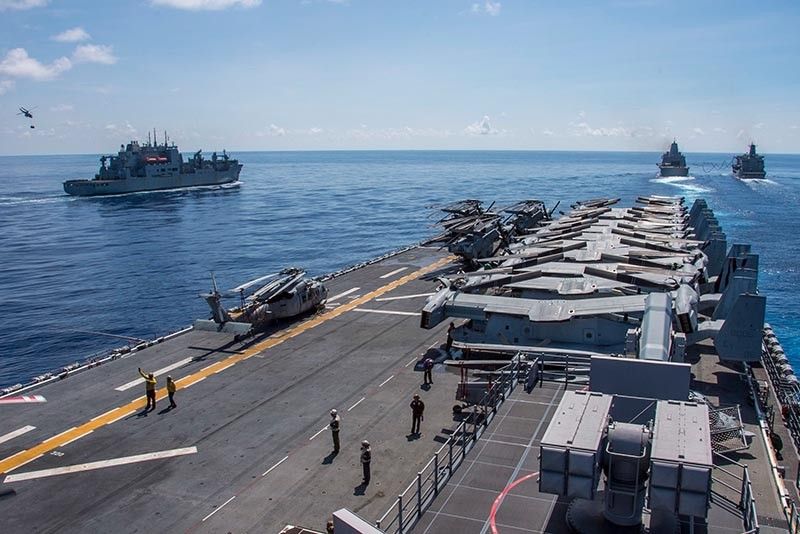Conflict in South China Sea among top concerns of US policy experts — study

MANILA, Philippines — Although geographically far from the United States, an armed conflict in the politically volatile South China Sea is among the top concerns of US foreign policy experts for 2019, according to a study by the Council for Foreign Relations’ (CFR) Center for Preventative Action published on Tuesday.
The survey evaluates ongoing and potential conflicts based on their likelihood of occurring in the coming year and their impact on the US interests, according to the CFR.
"The PPS aims to help the US policymaking community prioritize competing conflict prevention and crisis mitigation demands," the survey said.
A hypothetical armed confrontation in the South China Sea was considered a "Tier I priority," or one that is a high priority.
According to the study, a conflict in the South China Sea has a moderate likelihood of happening but would have a "high" impact, which means the "contingency directly threatens the US homeland, a defense treaty ally, or a vital strategic interest, and thus is likely to trigger a major US military response."
The possibility of a similar confrontation in the East China Sea involving China and Japan, however, is considered unlikely in 2019, although it had been a Tier I concern in previous years.
The survey said the conflict could be between one or more Southeast Asian claimants to the Sea including Brunei, Malaysia, the Philippines, Taiwan and Vietnam.
Beijing has been continuing to militarized its occupied features in the South China Sea over the past several years. Earlier this year, former Presidential Spokesperson Harry Roque did not pick a side and called the issue an issue between China and the United States.
READ: South China Sea militarization an issue between China, US — Palace
According to a report last week in state newspaper Global Times, a Chinese Air Force Col. Dai Xu said that if US warships "break into Chinese waters again" that two warships should be sent to meet it: "one to stop it, and another one to ram it."
Armed conflict is often cited as a concern by the administration of President Rodrigo Duterte in not asserting the 2016 Permanent Court of Arbitration ruling, that invalidated China’s nine-dash line justification for claiming sweeping jurisdiction over the South China Sea.
READ: For South China Sea observers, 'useless' Hague ruling view is baseless
Supreme Court Justice Antonio Carpio, a main critic of the administration’s interpretation of the the non-enforceability of the 2016 Hague ruling, said those who equate asserting rights over West Philippine Sea to waging war, was a "false option."
Other concerns the study classified as a Tier I concern include cyberattacks on US digital infrastructure and networks, renewed tension in the Korean Peninsula and an armed conflict between Iran and the US, among others.
A Social Weather Stations survey released last week found that three in five Filipinos (61 percent) believe that the US' would uphold its end of the 1951 Mutual Defense Treaty.
READ: 3 in 5 Filipinos believe US will defend Philippines — SWS
According to the survey, 67 percent of those aware of the maritime dispute believe that the US would come to the Philippines' aid in case of an invasion by a foreign country.
- Latest
- Trending






























